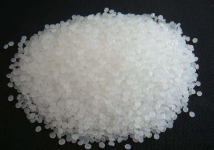read: 712 time:2025-06-27 12:58:52 from:化易天下
Understanding the reactivity differences between phenoxide ions and phenol is crucial in both academic and industrial chemistry, especially in the field of organic synthesis. This article will explore why phenoxide ion is more reactive than phenol, focusing on key chemical principles such as resonance stability, charge distribution, and acidity.
One of the primary reasons why phenoxide ion is more reactive than phenol lies in the resonance stability of the ion. Phenol (C6H5OH) can be viewed as a benzene ring with a hydroxyl group (-OH) attached. In the neutral phenol molecule, the lone pair of electrons on the oxygen is partially delocalized into the aromatic ring, but this delocalization is not as extensive as in the phenoxide ion (C6H5O-).
When phenol loses a proton (H+), it forms a phenoxide ion, which has a negative charge on the oxygen atom. This negative charge is highly delocalized over the entire benzene ring through resonance, significantly increasing the stability of the ion. The resonance structures of the phenoxide ion show that the negative charge is not confined to the oxygen atom but is distributed over several positions on the ring. This extensive delocalization of the negative charge makes the phenoxide ion much more reactive than phenol.
Another factor contributing to the higher reactivity of the phenoxide ion compared to phenol is the distribution of the negative charge. In phenol, the oxygen atom holds a lone pair of electrons, but it is not fully negative because the oxygen is still bonded to a hydrogen atom. This makes phenol less nucleophilic and, consequently, less reactive.
On the other hand, the phenoxide ion carries a full negative charge on the oxygen atom after losing the proton. This full negative charge significantly increases the nucleophilicity of the oxygen, making the phenoxide ion more reactive towards electrophiles. The increased electron density on the oxygen atom in the phenoxide ion makes it more likely to participate in chemical reactions, especially those involving electrophilic attack.
The difference in acidity between phenol and phenoxide ion also plays a crucial role in their reactivity. Phenol is a weak acid, with a pKa value around 10, which means it only partially dissociates in water to form the phenoxide ion and a proton. However, once the phenoxide ion is formed, it is significantly more reactive due to its complete ionization.
The ionization process that leads to the formation of the phenoxide ion also increases its reactivity because the ion is in a more basic form than the neutral phenol molecule. This increased basicity makes the phenoxide ion more reactive in nucleophilic substitution reactions, where it can easily donate its electron pair to an electrophile.
In conclusion, the phenoxide ion is more reactive than phenol due to a combination of factors, including resonance stability, charge distribution, and acidity. The extensive delocalization of the negative charge in the phenoxide ion, coupled with its increased nucleophilicity, makes it significantly more reactive in chemical reactions. Understanding why phenoxide ion is more reactive than phenol is essential for chemists looking to optimize reactions involving phenolic compounds.

Jincheng Petrochemical's 300000 ton polypropylene plant successfully trial production, 2024 polypropylene market analysis

The ABS market remains sluggish, what is the future direction?

Market differentiation of bisphenol A intensifies: prices rise in East China, while prices generally decline in other regions

The production method and process flow of silicone acrylic lotion, and what are the common raw materials